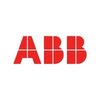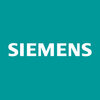Filter interviews by
Stauff India Design Engineer Interview Questions and Answers
Stauff India Design Engineer Interview Experiences
1 interview found
Interview Questionnaire
2 Questions
- Q1. What is the difference between ISO and ASME standard.
- Ans.
ISO is an international standard while ASME is an American standard for engineering design and manufacturing.
ISO is recognized globally while ASME is mainly used in the United States.
ISO covers a wide range of industries while ASME is primarily focused on mechanical engineering.
ISO standards are voluntary while ASME standards are mandatory in some industries.
ISO standards are developed by the International Organization...
- Q2. What is FMEA and what do you do in FMEA.
- Ans.
FMEA stands for Failure Mode and Effects Analysis. It is a systematic approach to identifying and preventing potential failures in a product or process.
FMEA is a risk assessment tool used in engineering and manufacturing.
It involves identifying potential failure modes, their causes, and the effects of those failures.
The goal is to prioritize and address the most critical failure modes to prevent them from occurring.
FME...
Top trending discussions






Interview questions from similar companies

I was interviewed in Nov 2024.
(4 Questions)
- Q1. Wind calculation as per IS code
- Ans.
The procedure for wind calculation as per IS code involves determining the design wind speed, selecting the appropriate terrain category, and calculating the wind pressure.
Determine the design wind speed based on the location and height of the structure.
Select the appropriate terrain category (rural, urban, etc.) as per IS code guidelines.
Calculate the wind pressure using the formula provided in the IS code.
Consider fa...
- Q2. SFD and BMD of cantilever beam
- Q3. Staad model for fixed pole
- Ans.
A STAAD model for a fixed pole is a structural analysis and design model used to determine the stability and strength of a pole that is fixed in place.
In a STAAD model for a fixed pole, the pole is typically modeled as a vertical member with fixed supports at the base.
The model considers factors such as wind loads, dead loads, and any other relevant loads that may act on the pole.
The analysis helps in determining the s...
- Q4. Design of Square base plate
- Ans.
Key considerations in designing a square base plate
Ensure the base plate is large enough to support the load without excessive deflection
Select appropriate material and thickness to meet structural requirements
Consider the connection details for attaching the base plate to the structure
Account for any potential corrosion or environmental factors that may affect the base plate
Include provisions for anchor bolts or other...
Interview Preparation Tips

Design Engineer Interview Questions & Answers
Crane Process Flow Technologies Indiaposted on 11 Jan 2025
(2 Questions)
- Q1. Questions related to core mechanical engg
- Q2. Product related questions

(1 Question)
- Q1. Gd@t tsa & dfmea

I applied via Recruitment Consulltant

(1 Question)
- Q1. Understanding of drawing, Different standards, norms .
(2 Questions)
- Q1. Drawing reading
- Q2. Sensor details , connection types
(2 Questions)
- Q1. Salary discussion
- Q2. Joining period, negotiation
Interview Preparation Tips
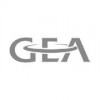
I applied via Recruitment Consulltant and was interviewed before Jun 2022. There were 5 interview rounds.

(1 Question)
- Q1. About your last company
Technical questions and job description
(1 Question)
- Q1. Test on different software
(1 Question)
- Q1. Salary discussion about ctc
Interview Preparation Tips

Design Engineer Interview Questions & Answers
Armstrong Machine Buildersposted on 24 May 2021
Interview Questionnaire
11 Questions
- Q1. Why leave a current job?
- Q2. Why you to join the organization?
- Q3. What is gear ratio?
- Ans.
Gear ratio is the ratio of the number of teeth on the driving gear to the number of teeth on the driven gear.
Gear ratio determines the speed and torque relationship between two gears.
It is calculated by dividing the number of teeth on the driving gear by the number of teeth on the driven gear.
A gear ratio greater than 1 indicates a reduction in speed and an increase in torque, while a ratio less than 1 indicates an inc...
- Q4. Symbol of First and third angle method?
- Ans.
The symbol of first angle method is a triangle with the vertex pointing downwards. The symbol of third angle method is a triangle with the vertex pointing upwards.
First angle method is commonly used in Europe and Asia while third angle method is commonly used in North America.
In first angle method, the object is placed in the first quadrant while in third angle method, the object is placed in the third quadrant.
The sym...
- Q5. What is a value of K factor?
- Ans.
The K factor is a value used in sheet metal design to determine the amount of springback that occurs during bending.
The K factor is a ratio that relates the neutral axis to the material thickness.
It is used to calculate the bend allowance and bend deduction in sheet metal bending operations.
A higher K factor indicates more springback, while a lower K factor indicates less springback.
Different materials and bending proc...
- Q6. What is spring back effect?
- Ans.
Spring back effect is the tendency of a material to return to its original shape after being deformed.
Spring back effect occurs when a material is bent or stretched and then released, causing it to return to its original shape.
It is commonly observed in materials like metals and polymers.
The amount of spring back depends on the material's elasticity and the magnitude of the deformation.
Spring back can be a desirable or...
- Q7. What do you mistakes in previous company?
- Q8. Are you comfort for do work 12+ hours?
- Q9. How much time you will taken to be a proficiency in inventor?
- Q10. Explain machining operations of given job?
- Ans.
Machining operations involve using various tools and techniques to shape and cut raw materials into the desired shape and size.
The job may involve using lathes, milling machines, grinders, or other specialized equipment.
The machinist must carefully measure and mark the material before cutting or shaping it.
The machinist may need to use different cutting tools or techniques depending on the material being worked on.
Exam...
- Q11. Type of gearboxes?
- Ans.
There are various types of gearboxes including spur, helical, bevel, worm, planetary, and cycloidal.
Spur gearboxes have straight teeth and are the simplest type.
Helical gearboxes have angled teeth and are quieter than spur gearboxes.
Bevel gearboxes are used for changing the direction of power transmission.
Worm gearboxes have a screw-like gear and are used for high reduction ratios.
Planetary gearboxes have multiple gear...

(2 Questions)
- Q1. Stress Strain curve
- Q2. IS codes related to steel structures

Design Engineer Interview Questions & Answers
Crane Process Flow Technologies Indiaposted on 26 Nov 2024
(1 Question)
- Q1. Thumb rules for sheet metal design
- Ans.
Thumb rules for sheet metal design include minimum bend radius, hole spacing, and material thickness considerations.
Minimum bend radius should be at least equal to the material thickness to avoid cracking
Hole spacing should be at least 2 times the material thickness to prevent distortion
Material thickness should be chosen based on the application and required strength
Avoid sharp corners to reduce stress concentrations
U...
Overall or general review
Skills evaluated in this interview

I applied via Naukri.com and was interviewed before Feb 2023. There were 2 interview rounds.
Aptitude test is conducted by organization to know the problem solving ability of candidate.
(1 Question)
- Q1. What are the different types of connections in steel structures.
- Ans.
Different types of connections in steel structures include welded connections, bolted connections, and riveted connections.
Welded connections involve joining steel members by welding them together.
Bolted connections use bolts and nuts to connect steel members.
Riveted connections use rivets to connect steel members.
Other types of connections include pinned connections and moment-resisting connections.
Examples: Welded be...
Interview Preparation Tips
Stauff India Interview FAQs
Tell us how to improve this page.
Stauff India Interviews By Designations
Interview Questions for Popular Designations
- Mechanical Engg. Design Interview Questions
- Senior Design Engineer Interview Questions
- Electrical Design Engineer Interview Questions
- Structural Design Engineer Interview Questions
- Piping Designer Interview Questions
- Auto CAD Designer Interview Questions
- Junior Design Engineer Interview Questions
- Hardware Design Engineer Interview Questions
- Show more
Design Engineer Interview Questions from Similar Companies
Stauff India Design Engineer Reviews and Ratings
based on 2 reviews
Rating in categories
|
Sales Manager
7
salaries
| ₹7.8 L/yr - ₹15.5 L/yr |
|
Assistant Manager
5
salaries
| ₹6.3 L/yr - ₹7.8 L/yr |
|
Applications Engineer
4
salaries
| ₹1.4 L/yr - ₹7 L/yr |
|
Production Manager
4
salaries
| ₹11.1 L/yr - ₹20 L/yr |
|
Sales Engineer
4
salaries
| ₹4 L/yr - ₹6.3 L/yr |
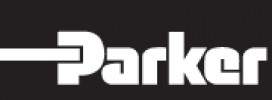
Parker Hannifin

Swagelok
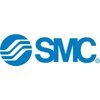
SMC Corporation
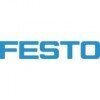
Festo
- Home >
- Interviews >
- Stauff India Interview Questions >
- Stauff India Design Engineer Interview Questions


